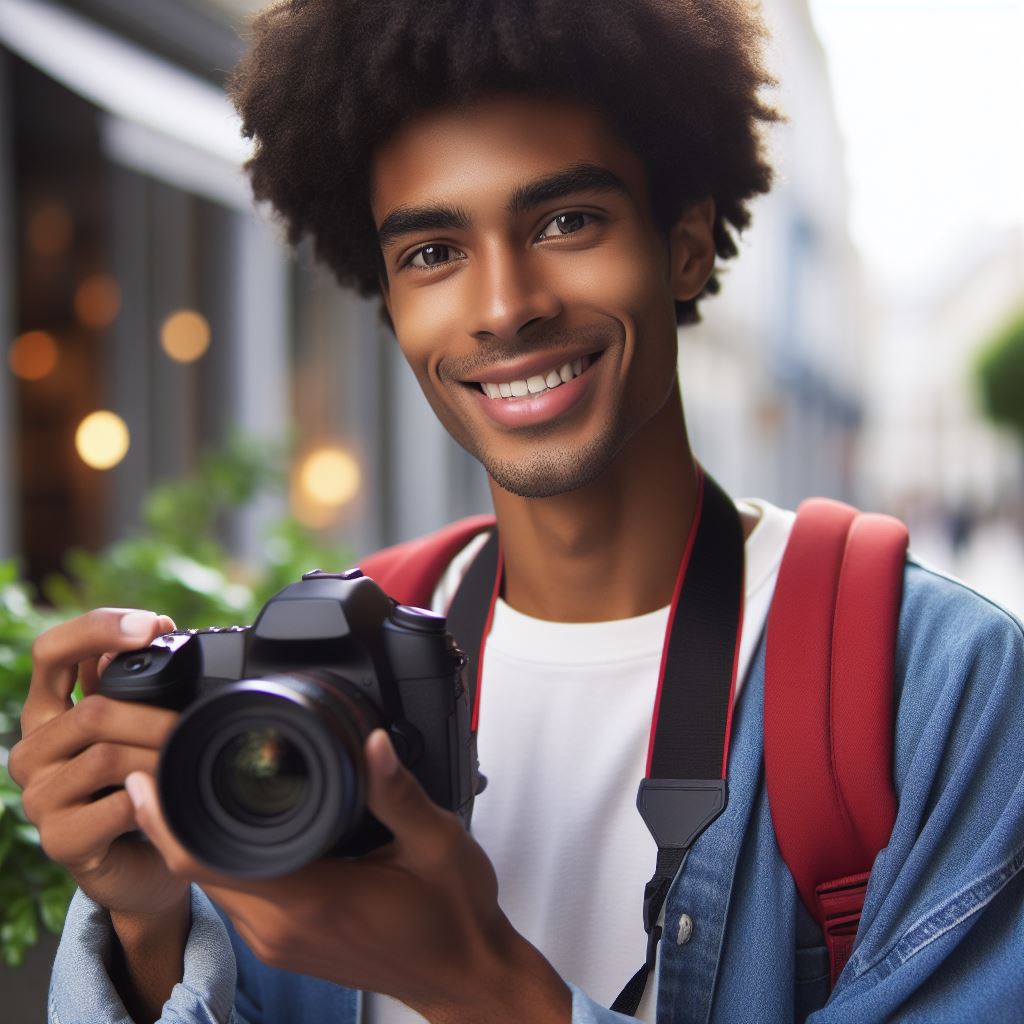Introduction
Maori culture is an integral part of New Zealand, holding immense significance in its history and identity.
This blog post aims to delve into Maori culture’s essence through the powerful medium of photography.
Photography has the unique ability to capture moments and emotions, giving us a visual narrative of Maori traditions, rituals, and practices.
It provides a remarkable opportunity to explore the beauty and depth of Maori culture in an engaging and immersive way.
With each photograph, we can uncover the stories and values that have shaped Maori identity, further appreciating their rich heritage.
The lens of NZ photography offers a unique perspective, showcasing the fusion of traditional practices with contemporary influences.
Through the clicking of a camera, we can witness the intricacy of Maori tattoo art, the grace of traditional dances like the haka, and the connection to land evident in marae (meeting house) architecture.
These visual representations bring Maori culture to life, inviting us to appreciate the significance of each component.
Photography also allows us to confront the challenges faced by Maori communities, shedding light on their struggles and resilience.
It serves as a powerful tool for raising awareness and fostering understanding, promoting Maori cultural revitalization and appreciation.
In the upcoming sections, we will explore different aspects of Maori culture showcased through the lens of NZ photography.
Each photograph provides a glimpse into the vibrant tapestry of Maori heritage, stimulating curiosity and appreciation for this unique and treasured culture.
Maori Culture in New Zealand
A. Overview of Maori culture
Maori culture is a rich and vibrant part of New Zealand’s heritage, deeply rooted in its history and traditions.
The Maori people are the indigenous Polynesian population of New Zealand.
The Maori language, known as Te Reo Maori, is one of New Zealand’s official languages and plays a significant role in their culture.
Personalized Career Consulting
Unlock your potential with expert career advice tailored to your goals. Get personalized guidance and actionable steps toward your dream career in New Zealand.
Get StartedThis language encapsulates the Maori identity and is taught in schools and universities to preserve its vitality.
Traditions such as haka, waiata (songs), and poi dances showcase the Maori culture’s expressive nature.
These performances are not only captivating but also a way for the Maori people to connect with their ancestry and share their stories.
Beliefs such as the spiritual connection to nature, known as Tapu, are central to the Maori culture.
The Maori people hold immense respect for their land, rivers, mountains, and forests, considering them sacred entities.
B. Importance of Maori culture in the New Zealand identity
The Maori culture’s impact on New Zealand’s identity cannot be overstated.
It is an essential part of the country’s heritage, shaping its arts, music, cuisine, and social fabric.
Maori culture underpins the nation’s sense of self and provides a distinct national identity.
C. The efforts made to preserve and promote Maori culture in the country
Efforts to preserve and promote Maori culture have been significant in New Zealand.
The government has implemented policies to reflect cultural diversity and ensure that Maori traditions are integrated into education and public institutions.
Organizations such as Te Papa Tongarewa, New Zealand’s national museum, actively work to showcase Maori arts, artifacts, and history.
Te Papa Tongarewa serves as a forum for Maori cultural representation, acting as a guardian of their heritage.
Maori language revitalization initiatives have also gained momentum, aiming to increase the number of Maori speakers and ensure the language’s survival.
Kapa haka competitions, cultural festivals, and Marae visits have become popular, contributing to the promotion of Maori culture.
Transform Your Career with a Professional CV and Cover Letter
Stand out to employers with an ATS-optimized resume and tailored cover letter designed to match your dream role. Let us craft your job application materials for success!
Get StartedTourism plays a role in preserving Maori culture by offering visitors an authentic experience.
Maori cultural performances, guided tours, and homestays provide opportunities for visitors to learn, appreciate, and support the continuation of Maori traditions.
The significance of Maori culture in New Zealand’s society is evident in the widespread use of Maori words and phrases, as well as the incorporation of traditional rituals and customs into public events.
This integration reinforces the uniqueness and importance of Maori culture in New Zealand’s identity.
In essence, Maori culture is an integral part of New Zealand’s heritage, shaping its identity, traditions, and artistic expressions.
Efforts to preserve and promote Maori culture are vital in ensuring that it remains a vibrant and celebrated aspect of the country’s social fabric.
Read: Landscape Photography: Capturing NZ’s Beauty
Photography as a Medium
A. Power of photography as a medium for storytelling and capturing cultural narratives
The power of photography as a medium for storytelling and capturing cultural narratives is undeniable.
Through visual images, photography allows us to see and feel the emotions and stories behind them.
It captures moments frozen in time, preserving them for future generations to experience.
B. How photography can help convey the richness and depth of Maori culture
When it comes to Maori culture, photography plays an essential role in documenting and celebrating its richness.
Maori culture is deeply rooted in traditions passed down through generations, and photography helps convey this depth.
By capturing images of Maori rituals, ceremonies, and daily life, photographers bring these stories to life.
The visual medium of photography allows viewers to connect with Maori culture in a profound way.
Boost Your Career with a Standout LinkedIn Profile
Attract recruiters and expand your network with a fully optimized LinkedIn profile tailored to highlight your strengths and professional goals. Let your profile open doors to new opportunities!
Get OptimizedIt helps break down barriers and bridges the gap between different cultures, fostering understanding and respect.
C. The work of New Zealand photographers who have focused on documenting Maori culture
New Zealand photographers have taken on the task of documenting Maori culture with incredible dedication and skill.
Their work not only preserves Maori traditions but also educates and inspires people from all walks of life.
One such photographer is Ans Westra, known for her iconic images capturing Maori life in the 1960s.
Her photographs portray the everyday struggles and joys of the Maori community, conveying their resilience and spirit.
Westra’s images serve as a visual historical record, highlighting the importance of preserving Maori culture.
Other notable photographers include Marti Friedlander and Peter Wallis, who have both made significant contributions to documenting Maori culture.
Friedlander’s black and white portraits beautifully capture the strength and dignity of Maori individuals.
Her photographs show the diversity within the Maori community and challenge stereotypes.
Wallis, on the other hand, focuses on capturing Maori landscapes, connecting the culture to the natural surroundings.
Through his lens, we can appreciate the deep spiritual connection Maori people have with the land.
These photographers, among many others, have played a crucial role in preserving and promoting Maori culture.
Their work serves as a powerful reminder of the importance of cultural heritage and the beauty of diversity.
Photography has the ability to transcend language barriers and convey stories that words alone cannot capture.
By documenting Maori culture, photographers ensure its legacy lives on, inspiring future generations to embrace their heritage.
So, let us recognize and appreciate the power of photography as a medium for storytelling and preserving cultural narratives.
Through the lens of these photographers, Maori culture shines brightly, reminding us of its richness and depth.
Let us continue to support and celebrate the work of these talented individuals, as their images truly speak a thousand words.
Read: Breaking into NZ Photography: A Starter Guide
Exploring Maori Culture Through Photography
Photography is a powerful medium that captures moments, emotions, and cultural practices.
In New Zealand, Maori culture has been beautifully documented through the lens of photography, showcasing various aspects of their traditions and heritage.
A. Maori Cultural Practices
Haka, a traditional Maori war dance, has been captured in powerful and expressive photographs, bringing to life the intensity and strength of the warriors.
Carving, another significant Maori cultural practice, has been beautifully documented, highlighting the intricate details and craftsmanship of these artistic creations.
Weaving, a traditional Maori skill, has been captured in photographs, showcasing the skillful hands of Maori women as they create stunning textiles and garments.
B. Notable Maori Photographers
Fiona Pardington, an accomplished Maori photographer, has played a significant role in promoting Maori culture through her captivating portraits and landscape photographs.
Qiane Matata-Sipu, known for her photo project “Nga Morehu – The Survivors,” focuses on preserving the stories and experiences of Maori elders, immortalizing them through her lens.
Ans Westra, a Dutch-born photographer, has dedicated her career to capturing the essence of Maori culture, documenting important historical moments and everyday life.
C. Representation in Exhibitions and Art Galleries
Photography exhibitions and art galleries throughout New Zealand have provided a platform for the representation and celebration of Maori culture.
The Auckland Art Gallery Toi o Tāmaki showcases a diverse range of Maori photography, allowing visitors to immerse themselves in the richness of Maori traditions.
The Te Papa Tongarewa Museum in Wellington frequently hosts exhibitions that preserve and promote the beauty and significance of Maori cultural practices through photography.
The Christchurch Art Gallery Te Puna o Waiwhetū features exhibitions that explore the intersection of Maori culture and contemporary photography, sparking conversations about identity and heritage.
These exhibitions and art galleries not only serve as a window into the world of Maori culture but also contribute to its preservation and wider appreciation.
In fact, photography has played a vital role in capturing and promoting the various aspects of Maori culture.
From showcasing cultural practices to presenting notable Maori photographers and their work, photography has become an essential tool in preserving and celebrating Maori heritage.
Through exhibitions and art galleries, Maori culture finds a platform for representation, allowing people from all walks of life to embrace and appreciate the beauty of this rich and vibrant culture.
Read: NZ’s Top Photographers: Styles & Success Stories

Visual Representation of Maori Culture
Analyzing the visual elements and composition techniques used by photographers to capture the essence of Maori culture is a fascinating endeavor.
The Maori people have a rich cultural heritage, and the photographers who have captured their culture have done so in a way that is visually stunning and impactful.
A. Use of Light, Color, and Perspective
One significant aspect of capturing Maori culture through photography is the skillful use of light, color, and perspective.
Photographers pay careful attention to these elements to create impactful and meaningful images.
Light is essential in photography as it can highlight specific elements or create a certain mood. In Maori culture, natural light holds great significance.
The photographers understand this and often capture their subjects in natural light, which adds depth and authenticity to the images.
Whether it’s sunlight streaming through the lush greenery or the soft glow of a sunset over the ocean, the photographers ensure that light plays a crucial role in showcasing the beauty of Maori culture.
The use of vibrant colors is another way photographers capture the essence of Maori culture through their lens.
Maori culture is known for its bold and vibrant colors, and photographers cleverly incorporate these colors into their compositions.
Whether it’s the vibrant red of a traditional Maori cloak or the striking blue of a traditional tattoo, the photographers utilize color to bring the culture to life in their photographs.
Perspective also plays an essential role in capturing Maori culture.
By carefully selecting angles and viewpoints, photographers are able to convey the depth and uniqueness of Maori traditions.
They capture moments that showcase the connection between Maori people and their environment.
Photographers skillfully use perspective to portray cultural significance, whether capturing a haka performance or a serene landscape.
B. Importance of Capturing Moments
A crucial aspect of photography that captures Maori culture is the ability to freeze moments that showcase the connection between Maori people and their environment.
This connection is deeply rooted in their cultural practices and traditions.
Photographers know that capturing these moments is essential because they portray the rich heritage and values of the Maori people.
These images tell stories beyond time, allowing future generations to understand and appreciate their cultural roots.
The moments captured also depict the strong bond between the Maori people and their land, which is of immense importance in their culture.
Photographers often showcase the majestic landscapes of New Zealand alongside the Maori people, emphasizing the deep connection they have with their surroundings.
These photographs are a testament to the strong spiritual relationship the Maori people have with their environment.
In short, photographers play a pivotal role in capturing the essence of Maori culture through the lens of photography.
By analyzing the visual elements and composition techniques they employ, it becomes evident that they have a deep understanding of Maori traditions and values.
The use of light, color, and perspective allows photographers to create impactful and visually stunning images.
Moreover, by capturing moments that showcase the connection between Maori people and their environment, they preserve and honor the rich cultural heritage of the Maori people for future generations.
Read: NZ Journalists: Reporting With Flair
Impact and Recognition
A. The impact of photography in raising awareness about Maori culture on a national and international scale
Photography has played a significant role in raising awareness about Maori culture both nationally and internationally.
Through captivating images, photographers have been able to showcase the rich heritage and customs of the Maori people.
One of the key impacts of photography is its ability to reach a wider audience and educate them about Maori traditions.
Photographs have the power to evoke emotions and create a connection between the viewer and the subject matter.
Many exhibitions featuring Maori culture have been organized, attracting visitors from various parts of the world.
These exhibitions allow people to immerse themselves in the Maori way of life, fostering a deeper understanding and respect.
Maori photographers and their works have garnered numerous awards and recognition for their contribution to the field.
Their ability to capture the essence of Maori culture through their lens has been applauded by experts and enthusiasts alike.
These accolades not only honor the talent and dedication of Maori photographers but also bring visibility to their culture.
The recognition received by Maori photographers and their works has helped elevate the status of Maori culture.
B. How photography has contributed to the preservation and revitalization of Maori culture
Photography has aided in the preservation and revitalization of Maori culture by documenting its various aspects.
Through photographs, important traditions, rituals, and customs have been captured and preserved for future generations.
These images serve as a visual archive, ensuring that the essence of Maori culture remains intact and accessible.
With the proliferation of technology and social media platforms, photography has become a powerful tool for cultural preservation.
Photographs of Maori traditions and ceremonies can now be shared globally, reaching a wider audience than ever before.
This exposure has sparked a newfound interest in Maori culture, leading to increased appreciation and support.
Photography has also helped bridge the generational gap within the Maori community, reconnecting younger generations with their roots.
By capturing and sharing images of traditional practices, younger Maori individuals are encouraged to embrace their heritage.
Photography has given Maori culture a voice, allowing it to traverse borders and break down cultural barriers.
Through the lens of NZ photography, Maori culture has gained recognition and acceptance on the global stage.
With each click of the camera, these photographers continue to make a lasting impact in preserving and celebrating Maori culture.
Conclusion
The Maori culture holds immense significance in New Zealand, and photography plays a crucial role in showcasing its rich heritage.
Through capturing the essence of Maori traditions, photography provides a visual representation of their customs and beliefs.
The lens of NZ photography helps to bring attention to the unique aspects of Maori culture, encouraging people to explore and appreciate this indigenous way of life.
Photography is a powerful tool that enables individuals to immerse themselves in the beauty of Maori culture.
By supporting and engaging with Maori photography, readers can contribute to the representation and preservation of indigenous cultures.
It is through these photographs that the stories, values, and traditions of the Maori people are shared and celebrated.
In an increasingly globalized world, we must acknowledge and respect the cultural diversity that exists.
Maori culture offers a unique perspective that is of great value to all of humanity.
The combination of Maori culture and photography allows for a deeper understanding and connection between different communities.
As we conclude this exploration of Maori culture through the lens of NZ photography, let us remember the power of visual storytelling.
Let us actively seek out opportunities to learn more about indigenous cultures, not just in New Zealand but around the world.
We can preserve the traditions and heritage of the Maori people for future generations by supporting and showing interest.
Take a moment to appreciate the beauty, wisdom, and resilience captured within each photograph and reflect on how we can honor and celebrate this remarkable culture.




